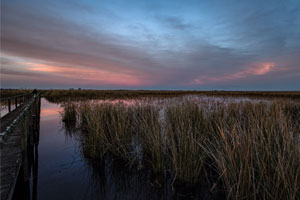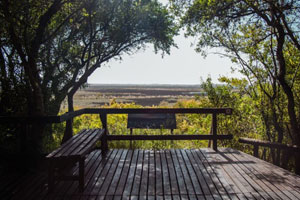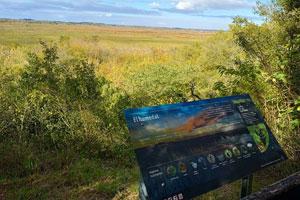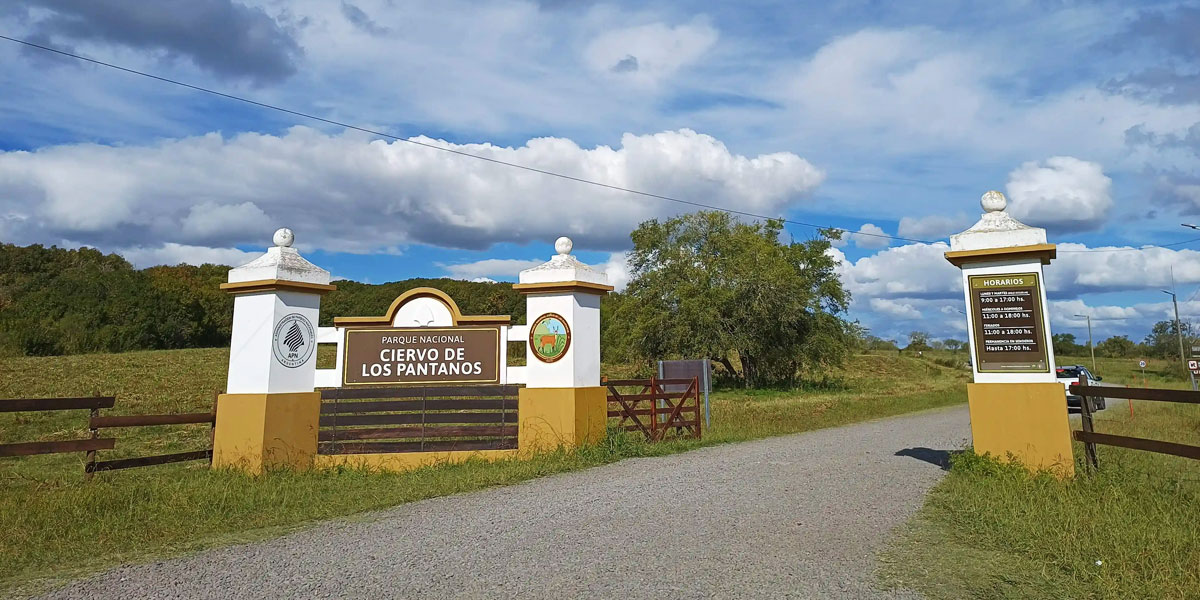Swamp Deer National Park, all the details about one of the Nature Reserves that are closest to the center of Buenos Aires.
Located in the town of Campana, it is only an hour from the city center, offering a large number of attractions for you to enjoy visiting!

In this other note we tell you about the areas that there are to escape a bit from the bustle of Buenos Aires traffic. Being such a large city, the number of activities that you will find in Buenos Aires is immense, among which the green spaces stand out to be able to obtain a moment of enjoyment of nature and breathe fresh air.
Originated on the basis of the Otamendi Natural Reserve that had been created in 1990. Recognized as an area of great importance for the conservation and care of birds.
This park was created in 2018 as a protected natural area that is administered by National Parks, in charge of preserving these spaces. It has approximately 5,000 hectares, protecting 3 ecoregions: La Pampa, Espinal and the Paraná Delta.
 It is named after the Swamp Deer, which is a species of deer known to be the largest in South America. You probably have a bit of luck and you can see it in the park facilities that are in charge of protecting them because they are in danger of extinction. This National Park is home to the southernmost known population of this endangered species.
It is named after the Swamp Deer, which is a species of deer known to be the largest in South America. You probably have a bit of luck and you can see it in the park facilities that are in charge of protecting them because they are in danger of extinction. This National Park is home to the southernmost known population of this endangered species.
In this space, you will find an immense variety of animal specimens such as wild cats, nutria, river otters, capybaras, as well as some 240 different species of birds. Among the flora, you will find cortaderas, totoras, serruchetas and flechillas.
In the ravine, forests of felling are formed, surrounding the elder, the ombú and the espinillo. It has a large lagoon, with species of sandpipers, ducks and coots, as well as the yellow-breasted bird and the gliding hawk. Under the water, you will see a great diversity of fish such as tarariras, catfish and mojarras. Within the family of insects, cicadas, spiders, ants and beautiful butterflies of all colors predominate.
As for the climate, a temperate and humid temperature abounds given the influence exerted by the Río de la Plata, which is quite close. Temperatures range from 10°C to 24°C maximum. Obviously, this is going to be subject to the time of the year in which you visit it, since from May to November there could be some frosts!
 It has about 1500 meters with trails that will take you to a panoramic viewpoint from where you will be able to fully observe the wetland. On these paths, you will be able to see signs with the history of the place, the importance of the region’s wetlands and other information of interest. Do not be surprised to see a vacant lot with a “Nature Working” sign, since there was clearing in this space and now the site is in natural recovery without human intervention.
It has about 1500 meters with trails that will take you to a panoramic viewpoint from where you will be able to fully observe the wetland. On these paths, you will be able to see signs with the history of the place, the importance of the region’s wetlands and other information of interest. Do not be surprised to see a vacant lot with a “Nature Working” sign, since there was clearing in this space and now the site is in natural recovery without human intervention.
Along these roads, you will arrive at the Native Trees nursery where you will be able to learn about the process of cultivation and development of the different species of native trees. In turn, there is a picnic area so you can sit down to eat something and enjoy the place. Obviously you will have to bring your groceries, since there are no stores in the park for that purpose.
 You will notice a certain recurrence in emphasizing the importance of wetlands, since their preservation is of the utmost urgency for the well-being of the planet and it is a rather fragile area. The Park works tirelessly to educate and expand knowledge about how to care for wetlands, in addition to protecting them and inviting those who visit the space to continue learning about ecosystems, their functioning, and the ecosystem services that exist. For this very reason, the Swamp Deer National Park was recognized as a Ramsar Site, a classification that gives international importance to wetlands.
You will notice a certain recurrence in emphasizing the importance of wetlands, since their preservation is of the utmost urgency for the well-being of the planet and it is a rather fragile area. The Park works tirelessly to educate and expand knowledge about how to care for wetlands, in addition to protecting them and inviting those who visit the space to continue learning about ecosystems, their functioning, and the ecosystem services that exist. For this very reason, the Swamp Deer National Park was recognized as a Ramsar Site, a classification that gives international importance to wetlands.
Now, to get here you can go by car heading towards the Pan-American Highway, Ramal Campana (also known as National Route 9). From there, you must get off at the Otamendi exit and walk 1km along Cordero Street until you reach the park entrance. If you come by bus, you will be able to use the services of Chevallier, leaving from Once and using those that are destined for Zárate. By train, you must use the Mitre Train from Retiro, getting off at Otamendi Station to combine in Ballester with the Zárate train.
Without a doubt, it is an excellent plan for you to enjoy a day completely immersed in Nature and live a different experience, learning how to continue taking care of our ecosystems. Open every day from 10 a.m. to 6 p.m., with free admission. Here is their website for more information.
In this link we tell you about other Parks and Natural Reserves that are in the city.
We invite you to join our Free Tours here, to continue learning more about Buenos Aires.






Leave A Comment